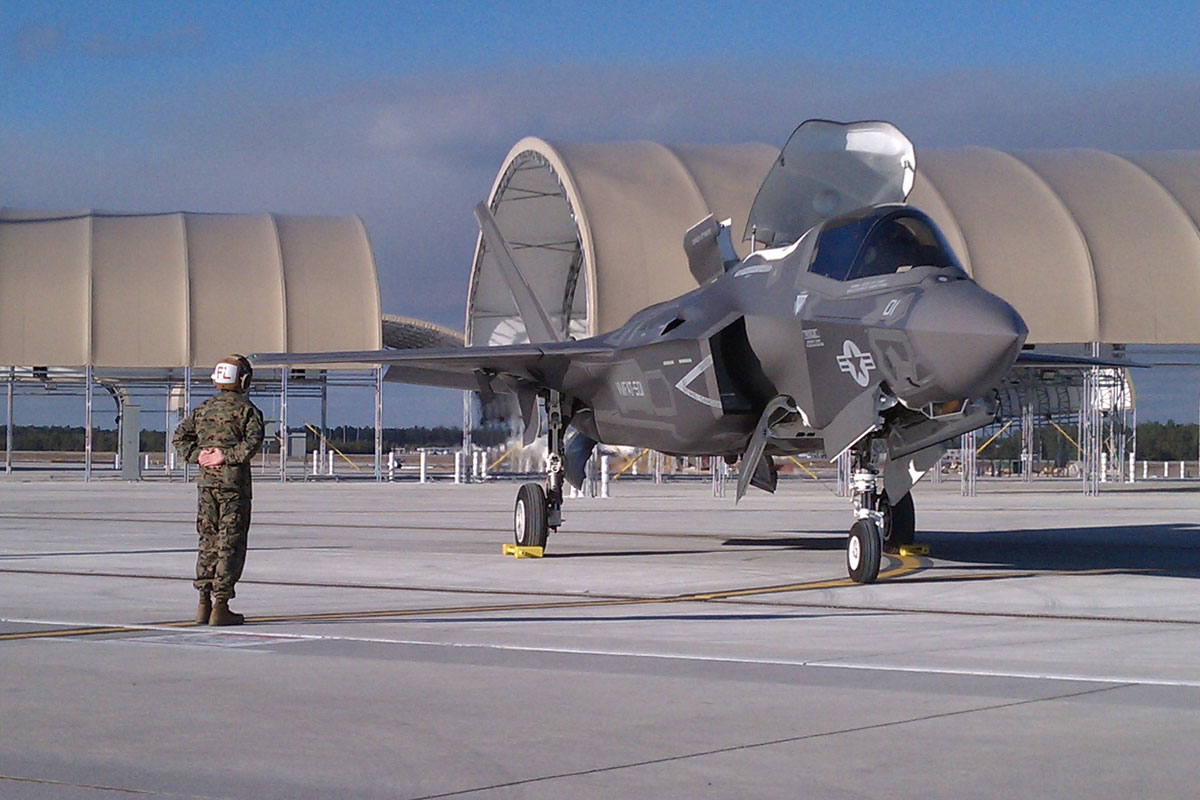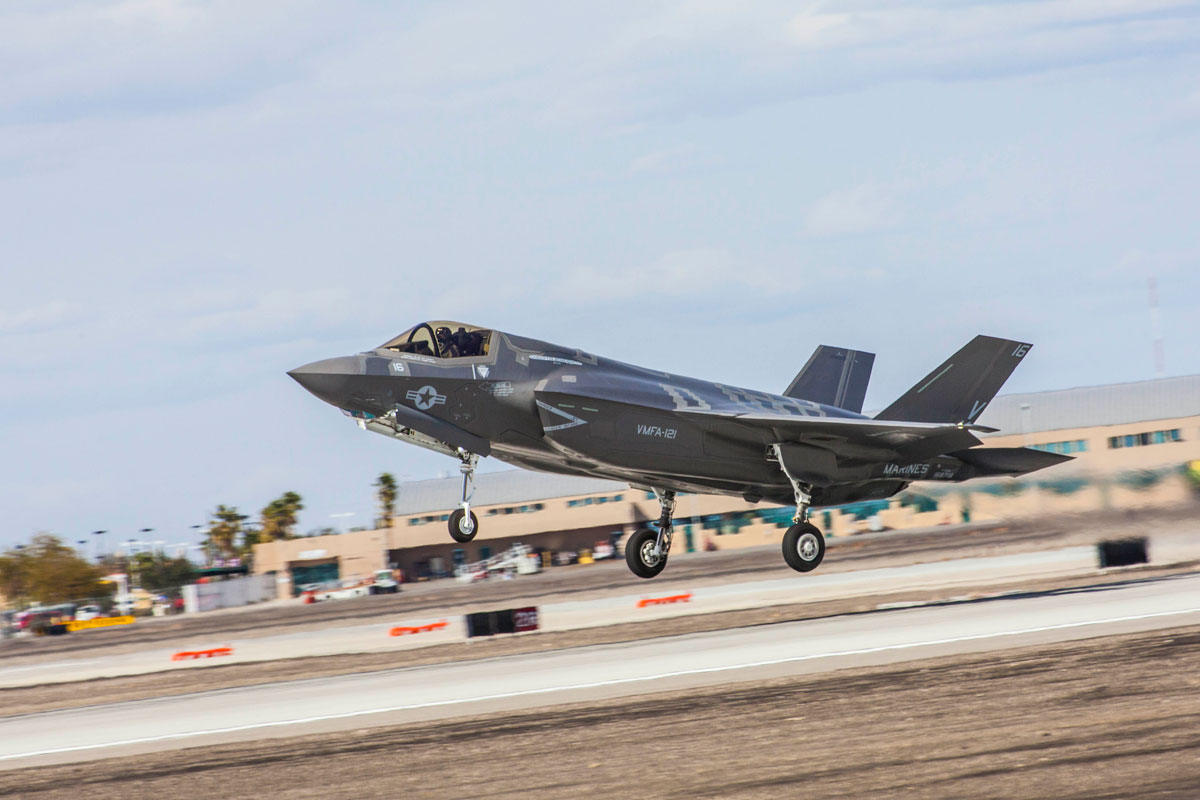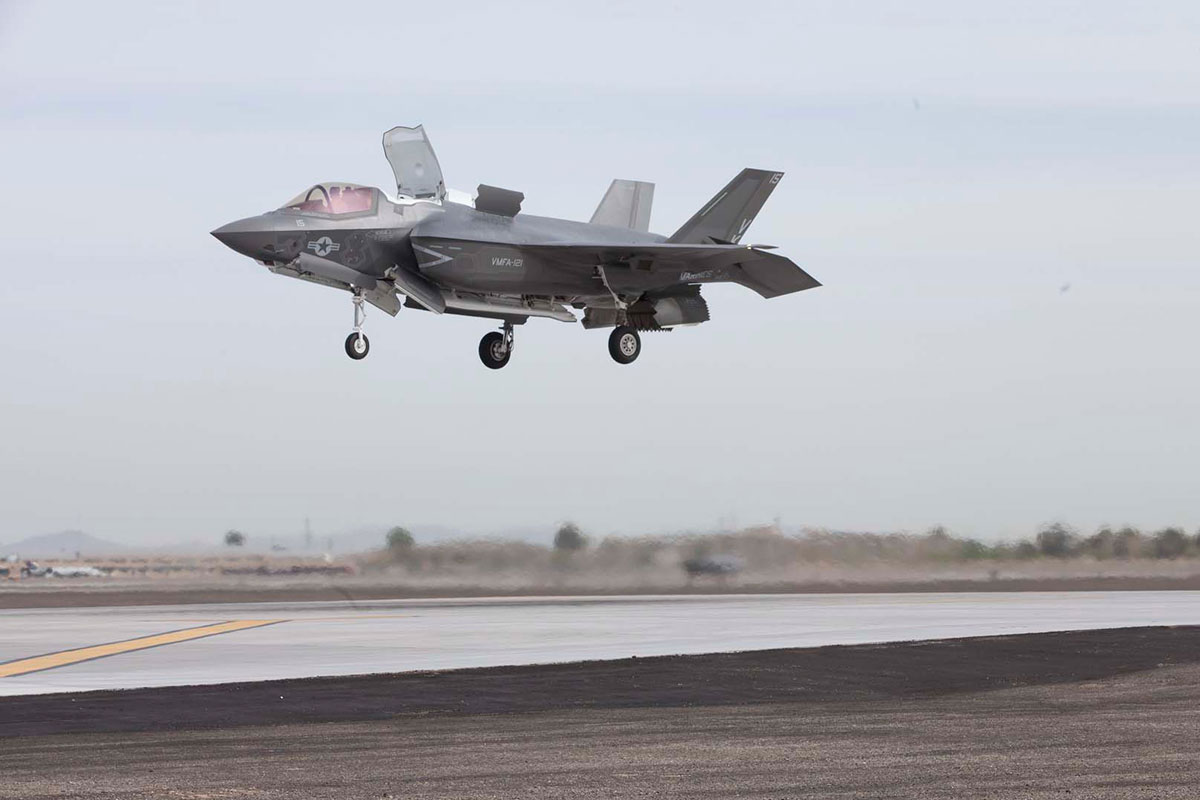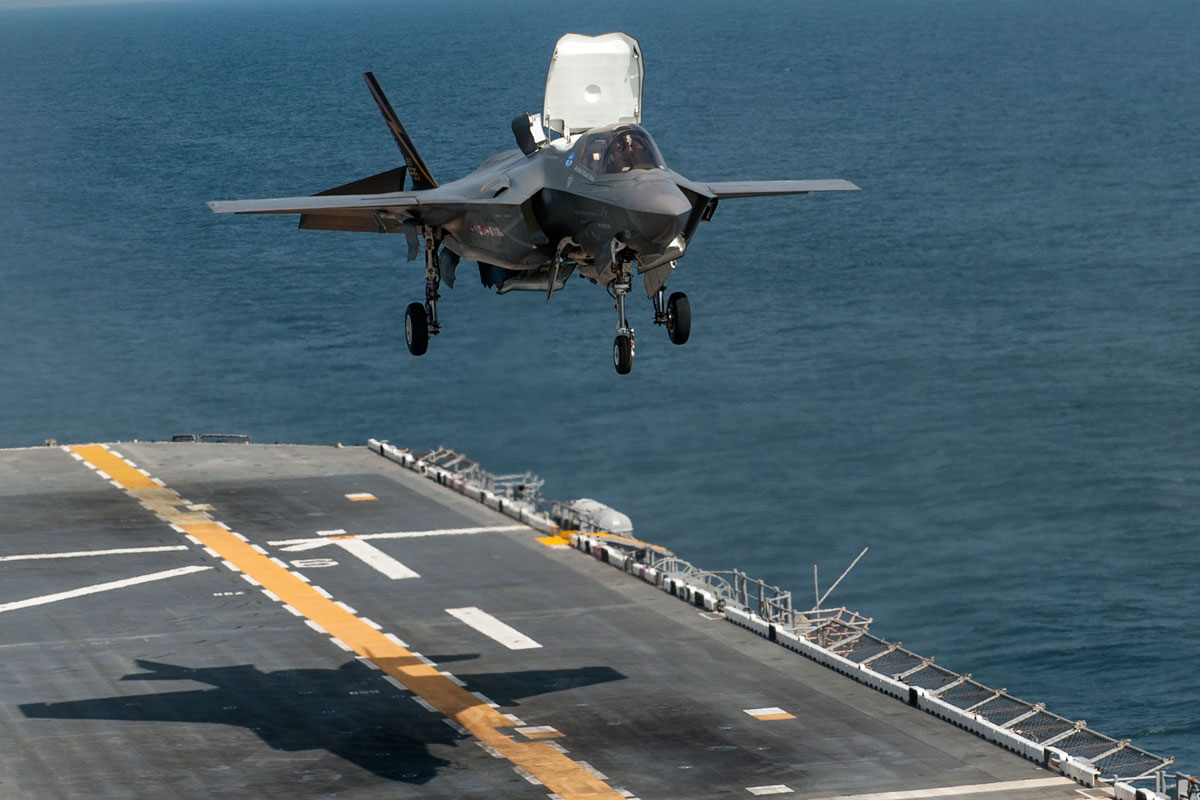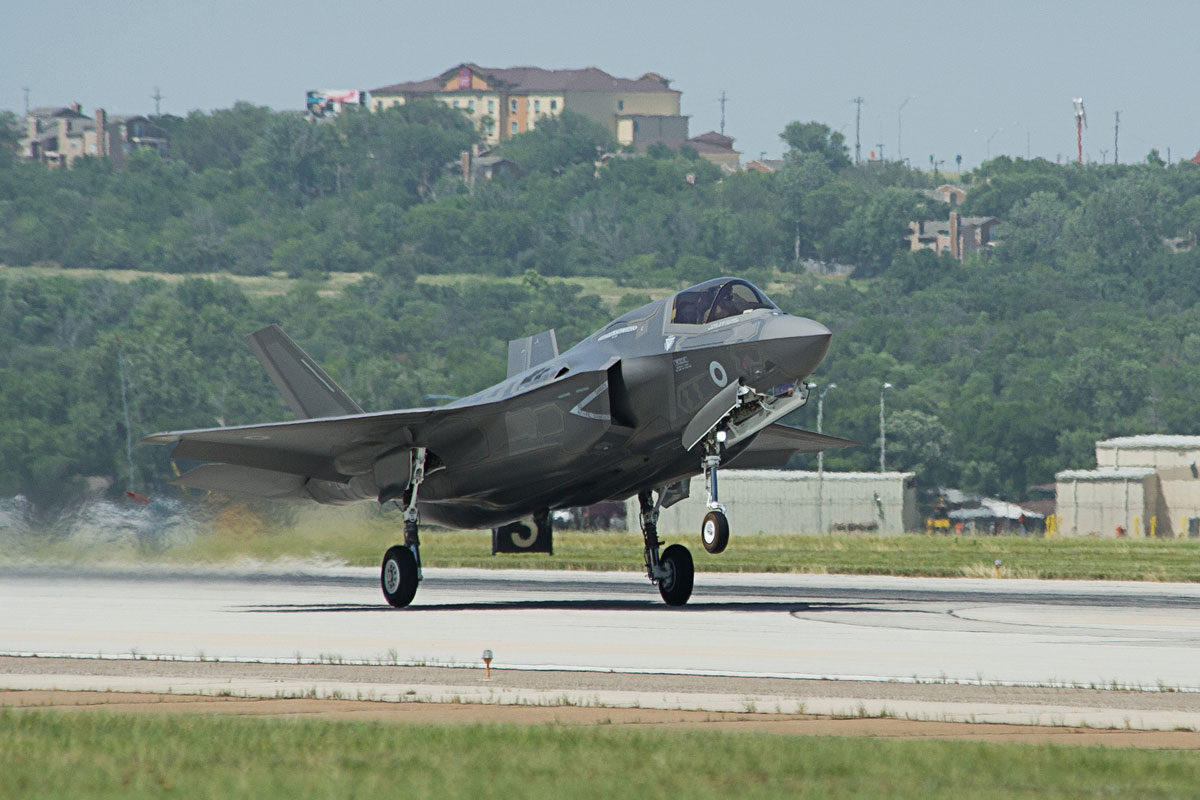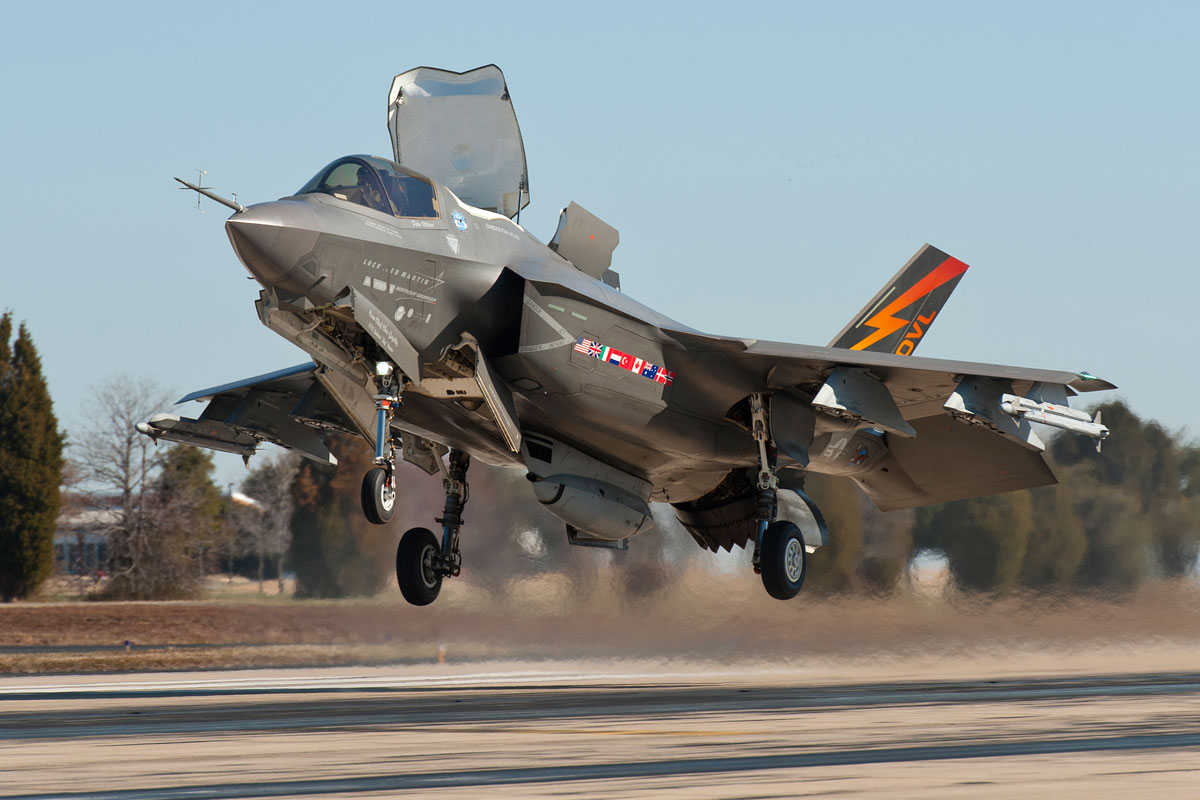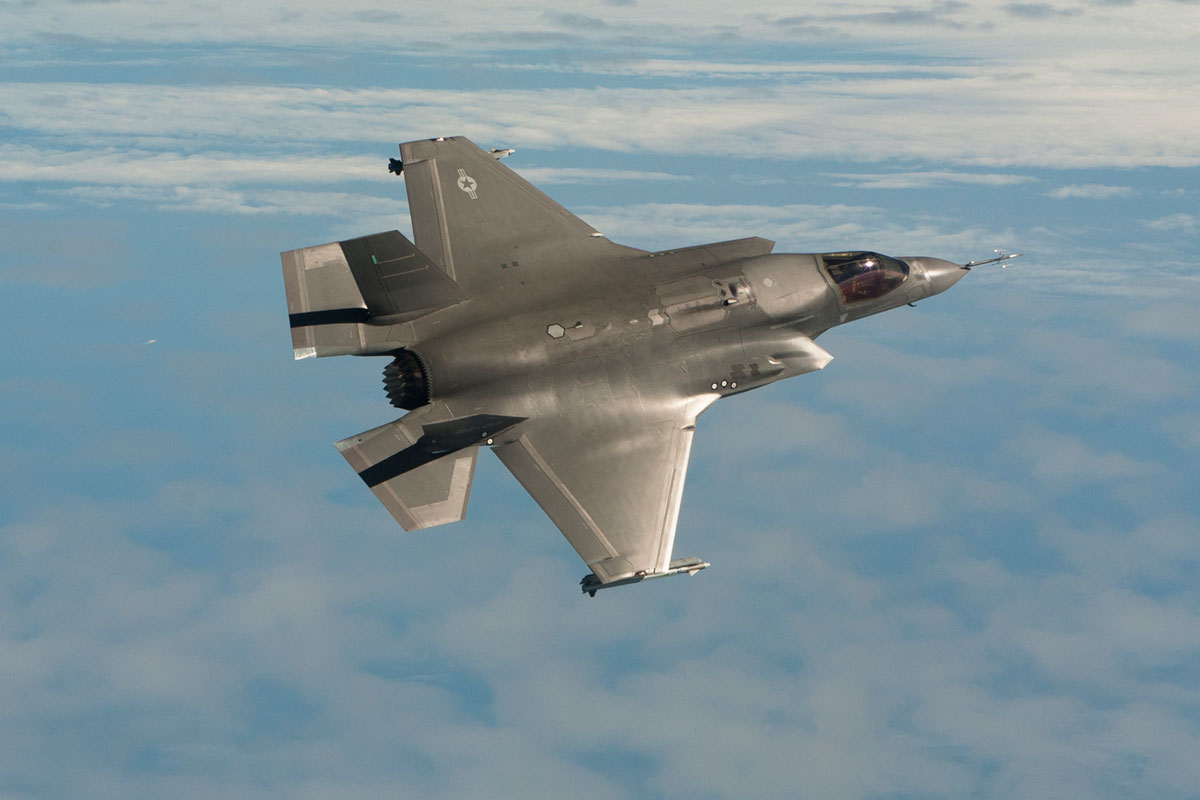Manufacturer: Lockheed Martin
Service: USMC
Armament: 2x AIM-120C air-to-air missiles; 2x 1,000-pound GBU-32 JDAM guided bombs
Propulsion: F135-PW-600
Speed: Mach 1.6 (1,200 mph)
Range: 900 nm
The F-35B Lightning II is the Marine Corps variant of the Joint Strike Fighter and features a vertical lift fan and pivoting engine nozzle to deliver vertical landing and short takeoff capability to expeditionary airfields. The F-35 will replace AV-8B Harrier IIs in the Marine Corps inventory.
Designed to operate from austere bases and a range of air-capable ships with its short takeoff/vertical landing capability, the F-35B can also takeoff and land conventionally from longer runways on major bases. F-35B aircraft have been delivered to the U.S. Marines and the U.K., whose forces are training together at the Integrated Training Center at Eglin Air Force Base. STOVL aircraft are also stationed at the first operational F-35 base, Marine Corps Air Station Yuma, Ariz., and are completing flight test at Naval Air Station Patuxent River, Md. The Italian Air Force will also operate the B-variant.
The F-35B has a Lift Fan just behind the cockpit and an engine that can swivel 90 degrees when in short takeoff/vertical landing mode. Because of the Lift Fan, the STOVL variant has smaller internal weapon bay and less internal fuel capacity than the F-35A. It uses the probe and drogue method of aerial refueling.
Related Video:
The F-35's low observable stealth allows it to safely enter areas without being seen by radars that 4th generation fighters cannot evade. The combination of the stealth features, the F-35’s active electronically scanned array (AESA) radar technology, and the aircraft’s ability to carry weapons internally means the F-35 can engage ground targets at long ranges without detection and use precision weapons to successfully complete air-to-ground missions.
Integrated sensors, information and weapons systems—combined with speed and maneuverability— are critical to the F-35’s air superiority. In air combat, 4th generation aircraft have a higher radar cross-section, which means they can more easily be seen by enemy fighters. A 5th generation fighter has a lower radar cross-section to allow the F-35 pilot to see the other aircraft first and take action.
